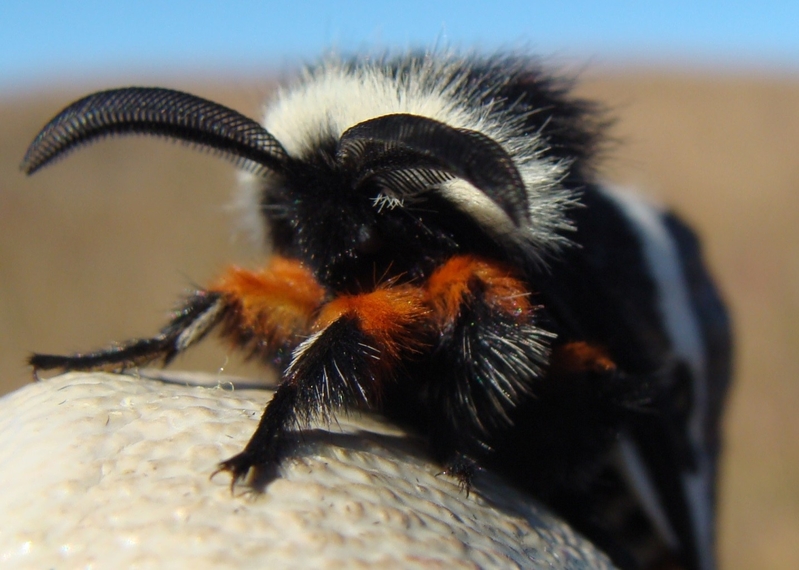THE TALLGRASS PRAIRIE BUCK MOTH (Family: Saturniidae)

In the Flint Hills of Kansas, the Buck Moth (Hemileuca maia), one of the giant silkworm moths, lives in a special habitat where woodland meets prairie. Its host plants are mainly Chinquapin oak and New Jersey tea. This day-flying moth is a “social” insect in that the caterpillars stay together, feed together and move together while in the oaks.
During hatch in April those caterpillars that emerge from the egg clutch first wait until all have hatched before moving off to feed. When buds and leaves on one twig have been devoured, the group follows a “leader” to the next feeding site. Damage to the oak is obvious only on peripheral branches, usually overhanging the prairie grasses. In about a month they migrate from the oaks and disperse into the prairie.
The caterpillars first move to the base of the tree where they wait for everyone in their group to finish a final molt. Then a lead caterpillar takes them single file out into the prairie. In the thick grasses they lose contact with each other, feeding on their own, mostly on New Jersey tea. They purposefully move in a direction away from the trees, often uphill.
In May, even before the caterpillars have left the trees, the oaks have burst secondary buds and the trees are fully leafed again.
By early July all have pupated in the soil where they wait through the summer and early fall before emerging as beautiful black, white and red adult moths in October. The males can be seen flying on the prairie hills during the day, searching for a mate. The females release a chemical scent and are mated almost immediately. They return to the oaks to lay their eggs. Clutches of about 200 eggs overwinter and the cycle begins again.
Posted by Valerie Wright (2017) from research carried out at Konza Prairie Biological Station. Photos by V. Wright.
